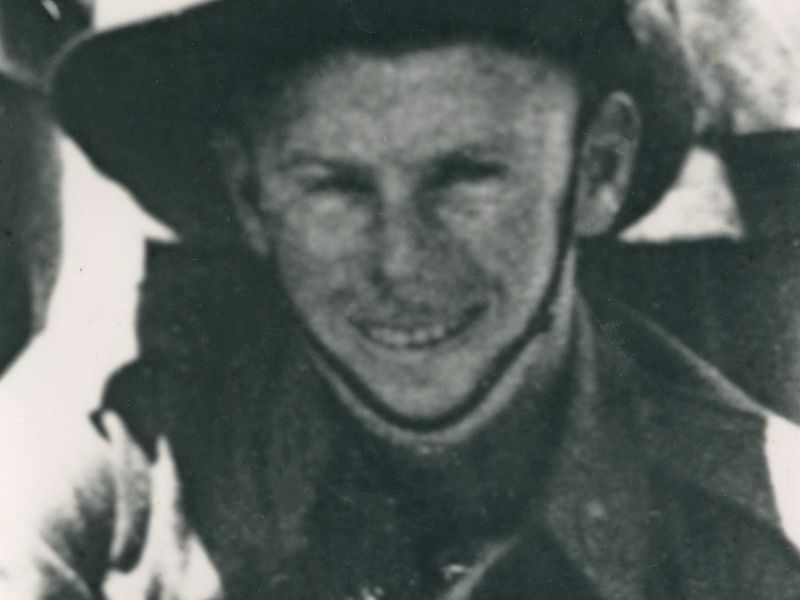Frank John Lloyd
Frank was born in Corryong, Victoria on the 15th of November 1917. He was the youngest of four children to George Hourne and Mary Ann (née Mahon) of Corryong. Frank attended the schools at Towong and Corryong during his younger years.
Frank enlisted in late November of 1939 at Wangaratta. He was a single farm labourer who was clearly keen to do his bit in the current conflict. Frank was allocated the Service Number VX7185 and placed in the 2/7th Infantry Battalion. He underwent his basic training at Puckapunyal. Frank spent Christmas and New Year in the Camp Dressing Station on account of him contracting gonorrhoea. He would not return to his unit until the 7th of February. Frank took two periods of unofficial leave , one in April and one in September. This cost him seven days confined to barracks and 3 days pay on each occasion.
The battalion departed Melbourne for overseas service on the 15th of April aboard the troopship Strathallan. The troops disembarked in Egypt on the 17th of May and joined the two other infantry battalions, the 2/5th and 2/6th, of the 17th Brigade at Beit Jirja in Egypt. Frank experienced his first campaign on active service when the battalion was involved in advancing against Italian forces in eastern Libya. He participated in the battles for Bardia and Tobruk. The battalion’s time in Libya came to an end while they were manning defensive positions at Marsa Brega.
On the 9th of April the 7th Battalion, along with the rest of the 6th Division, embarked for service in Greece. This would become one long withdrawal beginning on the 16th of April and ending on the 26th of April when they were evacuated from Kalamata aboard the Costa Rica. Unfortunately the ship was crippled by German aircraft and the men of the 7th Battalion travelled to Crete aboard two British destroyers, HMS Defender and HMS Hereward.
Initially the battalion was deployed to defend the coastline around Georgioupolis in case of German forces landing by sea. After the German airborne landings on May the 20th they moved to join the fighting around Canea. On the 27th it took part in a wild bayonet charge at a location called 42nd Street. This temporarily stopped the German advance. The battalion played an important role as the rearguard as Commonwealth forces retreated to the south side of the island to await evacuation. The 2/7th had been promised that, due to them holding the rearguard positions, space would be made available on the evacuating ships. As they approached the beaches at Sfakia they maintained discipline walking in a straight line across to the barges. The going was tough as they were passing over many soldiers who were sitting on the beach resigned to becoming prisoners of war. Reg Saunders, an indigenous member of the battalion (who eventually escaped from Crete and became an officer with the battalion) was told that he would be on the next barge.
“But there wasn’t any. The last barge left not 20 yards from me. I guess, like the rest of the boys, I was too fatigued to worry much about it … even as we stood and watched the barge go with some of our mates aboard. Food and water seemed the most important things then.”
Frank was among the 5000 men left behind from a variety of Commonwealth units. On the 9th of September 1941 he was classified as “killed in action”. No information is readily available to indicate what happened to Frank between the 2nd of June and the 9th of September.
Frank was buried at Suda Bay War Cemetery on the island of Crete. He is also remembered on the Australian War Memorial Roll of Honour, the Corryong RSL, and the Corryong War Memorial For his service, he was awarded the 1939-1945 Star, the Africa Star, the Defence Medal, the War Medal 1939-1945 and the Australian Service Medal 1939-1945.

 Stephen Learmonth
Stephen Learmonth